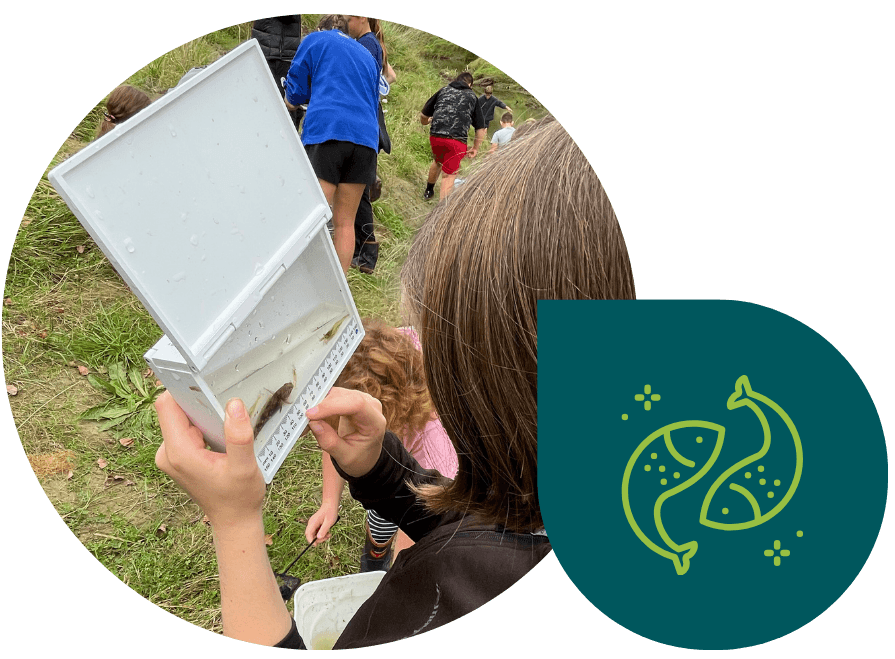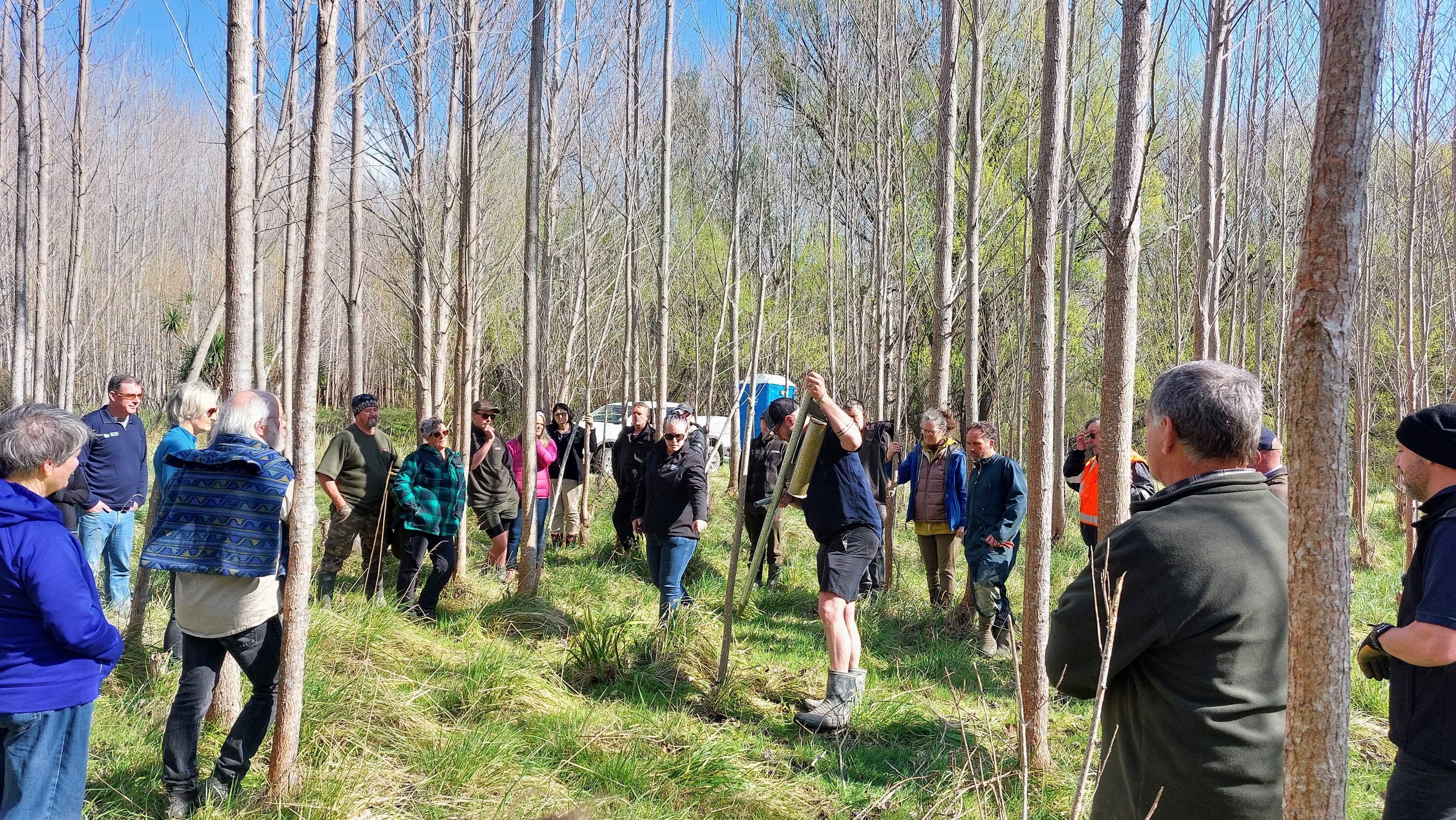Tīnui-Whareama Catchment Group
In the heart of Wairarapa’s eastern hill country, the Whareama River, Tīnui River and their tributaries, stretch for 40 km – connecting the community with nature.
In 2020 a group of rural landowners came together to form a catchment group, with aspirations of improving and enhancing the Whareama river and all its tributaries.
Location
The Whareama River is located in northeastern Wairarapa and flows in a southerly direction, meeting the Pacific Ocean approximately 8.5km north of the settlement of Riversdale.
The catchment area is the largest in the Wairarapa (nearly 52,000 hectares) and is made up of two main hillcountry subcatchments which converge near the settlement of Tinui. The land use within the catchment is mainly pastoral and arable farming and exotic forestry. From Tinui the river meanders through the lower Whareama valley and slows and widens, becoming over 100m wide near the coast.
Vision
Create a resilient and thriving community for future generations.
Goals
Profitable, environmentally sustainable farms and businesses for future generations.
Resilient infrastructure that reflects community needs and values.
Healthy waterways where wildlife, business and recreation thrive.
Land with the right mix of indigenous and exotic plants to build greater biodiversity and native ecosystems across the catchment.
Projects

Water quality monitoring
Currently there is little monitoring done of the Whareama and Tīnui Rivers, as such, monitoring by the catchment group will be supported by Greater Wellington Regional Council.
The group will monitor 12 sites along the Whareama and Tīnui Rivers and their tributaries.
There are four rounds of bottle sampling and macroinvertebrate sampling scheduled over the coming wet and dry seasons.
The group will also join the trial of the CBFM monitoring tools utilising survey123 for the sampling. Mountains to Sea Wellington will support the group with trialling the tools and data management.

Īnanga monitoring
The Whareama River was once known for being an abundant īnanga fishery river. In the past 20 years there’s been a rapid decline in the fishery.
The community would like to know more about īnanga in the river, the impacts, and potential solutions.
The Whareama School senior students are working to understand the lifecycle of īnanga and how they might be impacted in the Whareama River.
The students will then come up with solutions on how the community can help protect the īnanga population in the awa.

Pest monitoring & control
The group has been working with John Bissell on pest control through the Wairarapa Catchment Collective.
Key elements identified were pest animal concerns across the catchment, aligning these with clear goals, and carry out catchment wide pest monitoring using chew cards, and trail cameras to help measure, and confirm anecdotal observations.
This included pre-monitoring to set benchmarks, designing specific pest control methods, costing infrastructure and exploring funding options, and implementing the plan with training and data collection systems in place
Monitoring results have been presented showing a high presence of ungulates, possums and cats. The group have chosen three small initial sites with high biodiversity values where they will focus pest control efforts. Hardware has been ordered and will be deployed over the coming months.
Community Events
Stream Walk
Church site, where the group delved into the Mangapokia Stream. Whaea Di, highlighted intriguing features like a shallow mineral pan causing rust-coloured banks. Using a clarity tube, the group examined water quality, which was a bit of a fan favourite. The fish traps revealed a thriving ecosystem with shortfin eels, īnanga, bullies, shrimp, and caddisflies.
The exploration continued to Lake Braemore, an artificially constructed lake on Braemore Farm. Initially created for irrigation, the lake now holds a broader community vision as a potential local camping and jet boating spot. Although it’s artificially constructed, the lake is teeming with life.
The nets were bursting with 14 shortfin eels, much to the excitement of all the tamariki. Before sharing some kai, the group gathered for whakawhanaungatanga – a moment to share and reflect. Days like these are not only about connecting with te taiao, but also about connecting the community with each other.

Mangapakeha Poplar Workshop
A pole workshop and community BBQ was held at Mangapakeha on Father’s Day. There were around 45 participants learning about growing, planting and harvesting of poplar poles. Native seedlings and harvested poles were available to take home. There appears to be some interest in the nursery being used as a community resource - further work needs to be undertaken on how this would work.
Next steps
The group has created an action plan to consolidate ideas and timeline actions to be able to take tangible steps.
Continue water quality monitoring in the Whareama and Tīnui Rivers to gain better insights into the current state of the awa.
Continue the īnanga spawning project and have students come up with actions to restore the īnanga spawning habitat. The results of the project will then be presented to the wider Tīnui Whareama Community.
Community review of pest animal monitoring information and creating Pest control trapping plan.
SedNed Modelling is set to start in June 2025 to better understand the areas of high risk for soil erosion in the Whareama Catchment.
Catchment Group Coordinator
SUE MALCOLM
info@wairarapacc.nz














